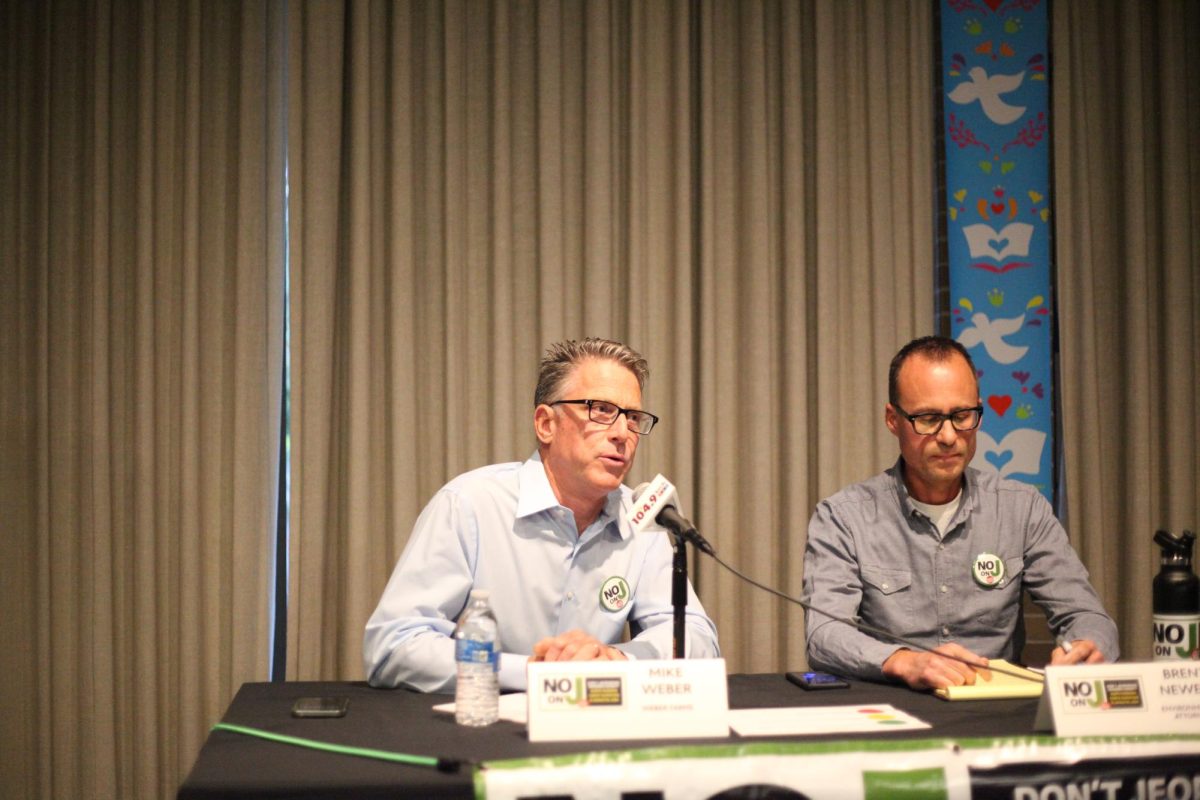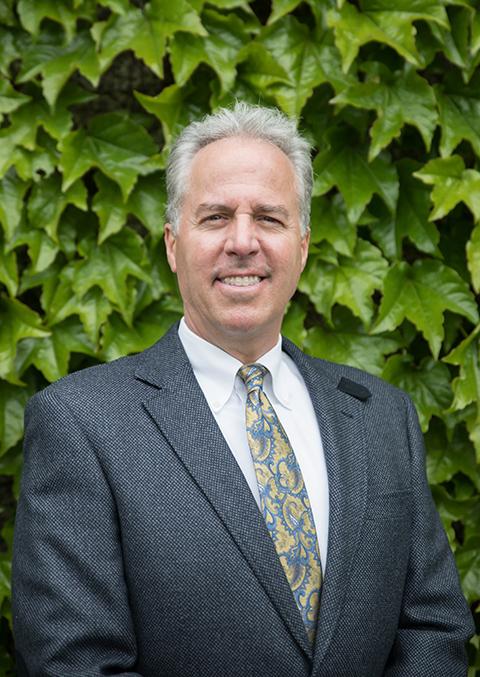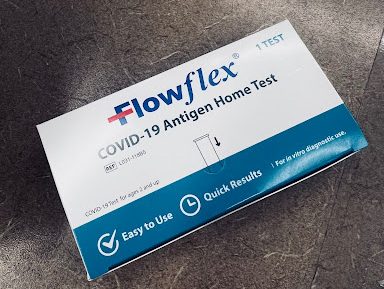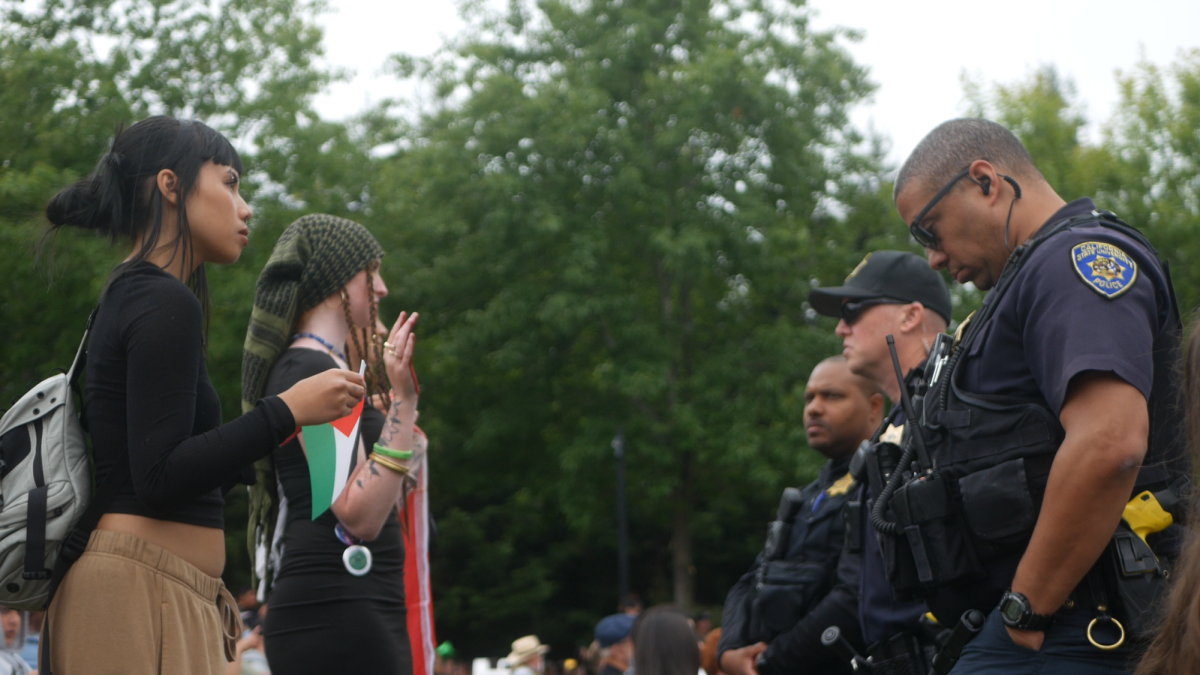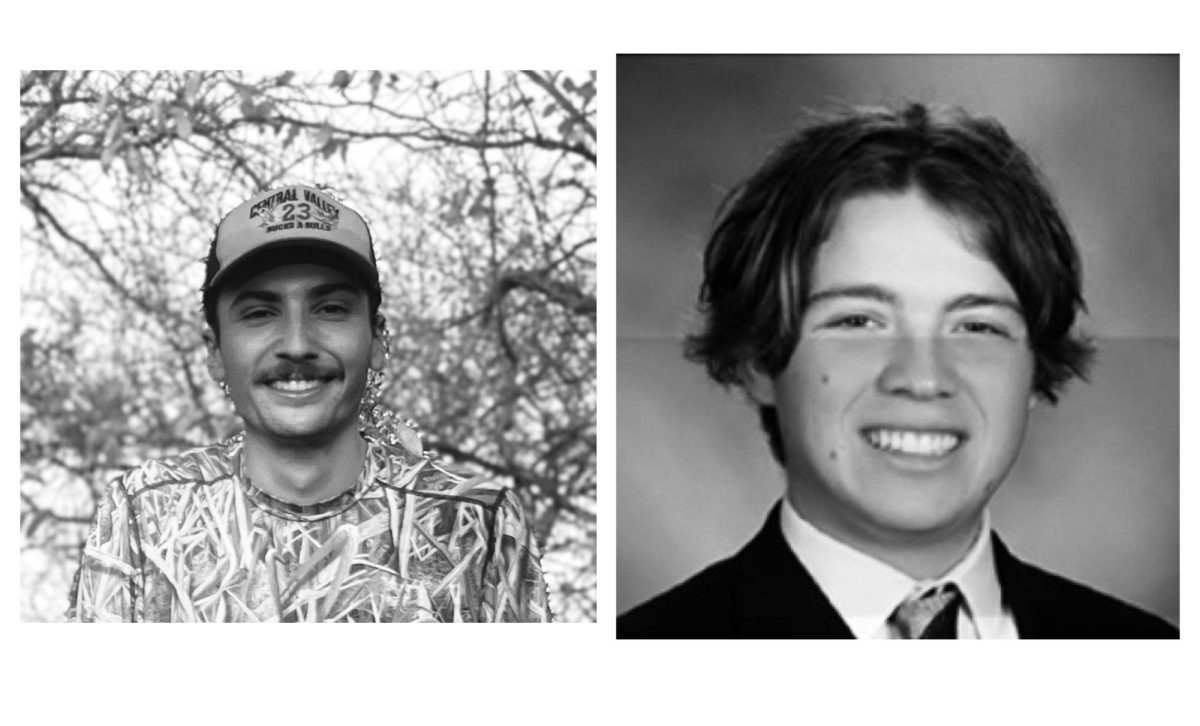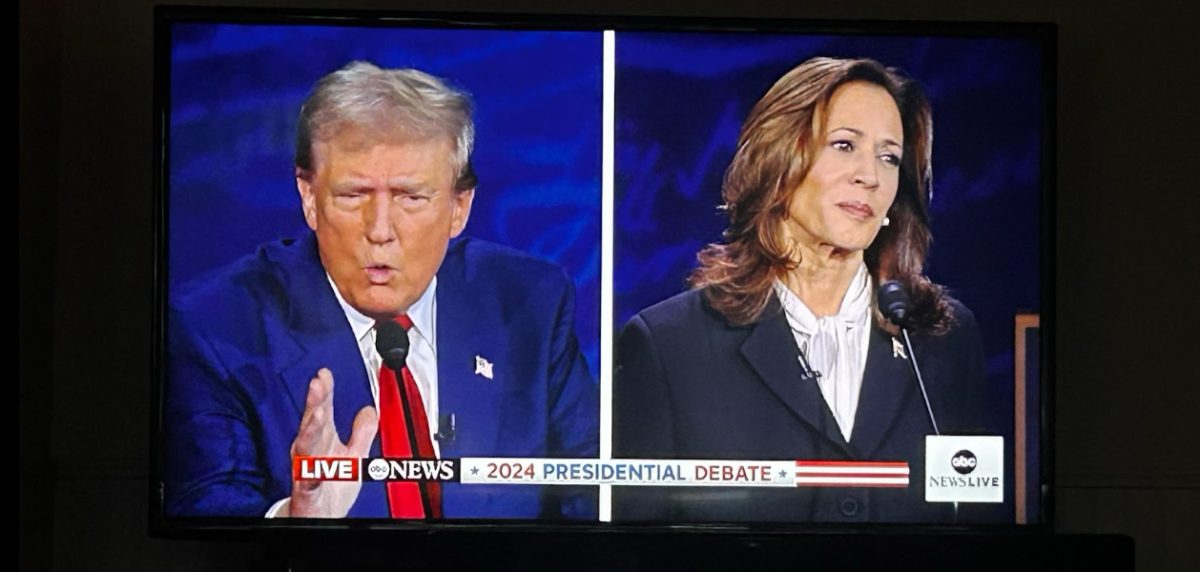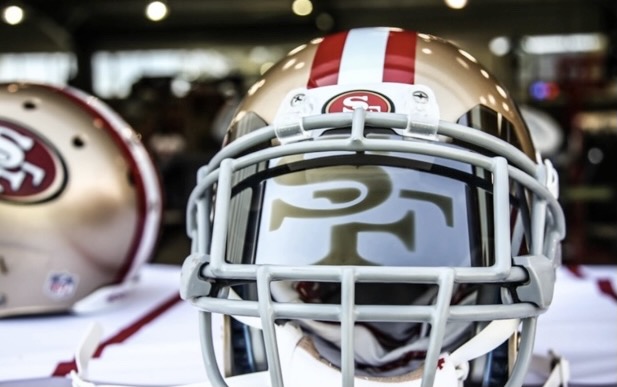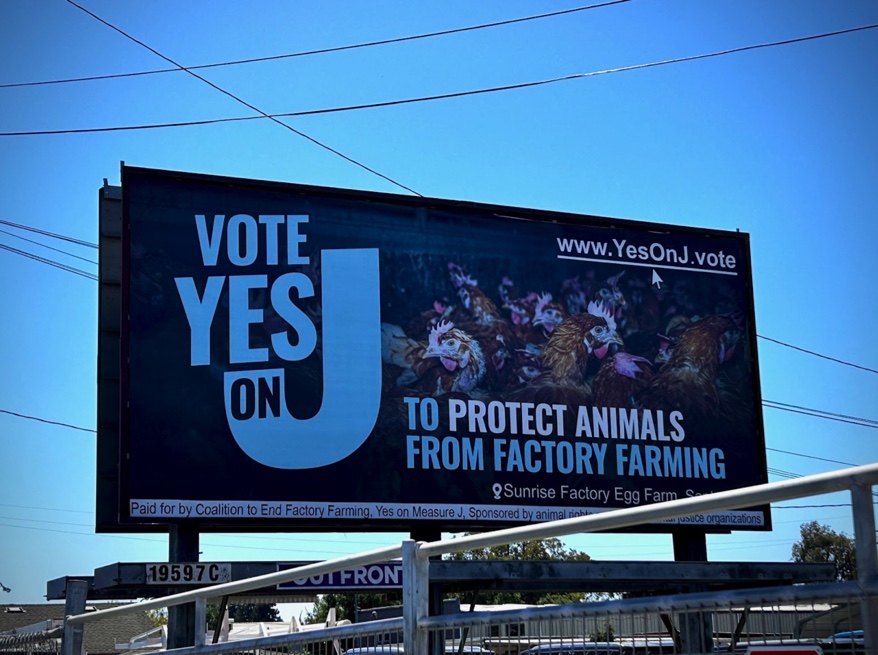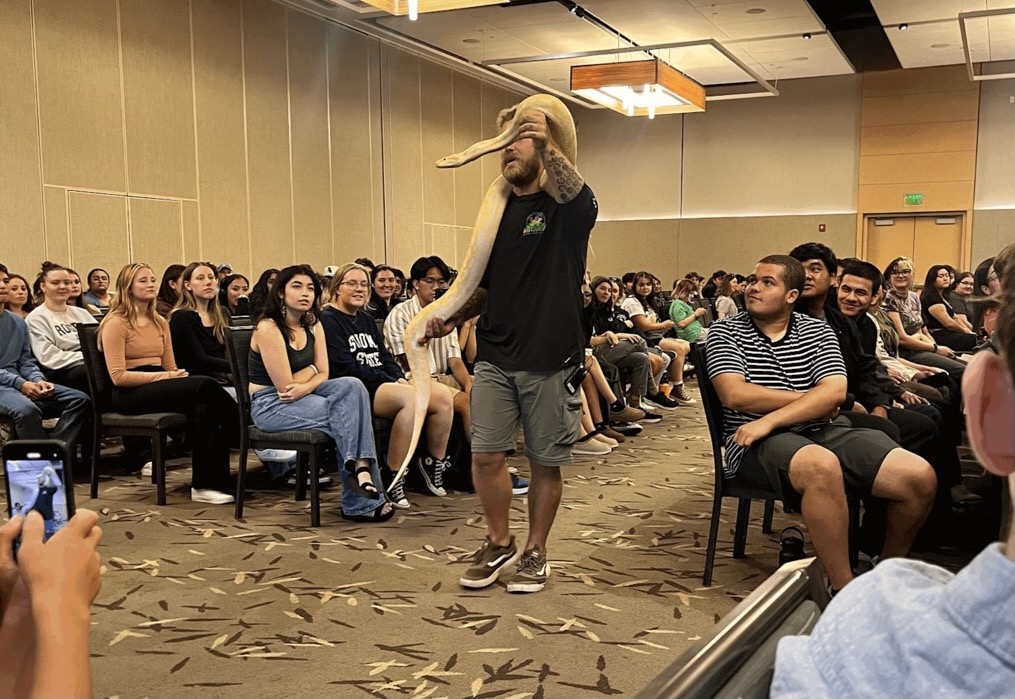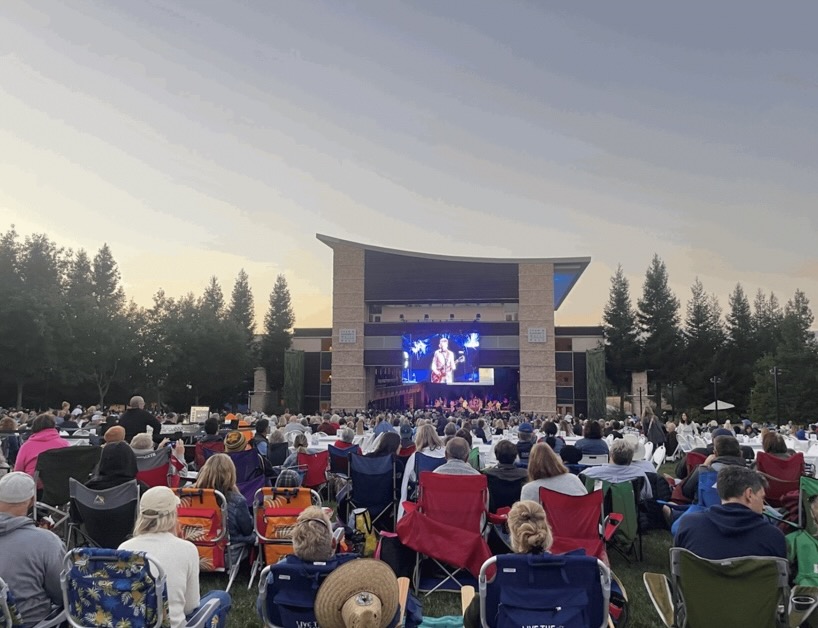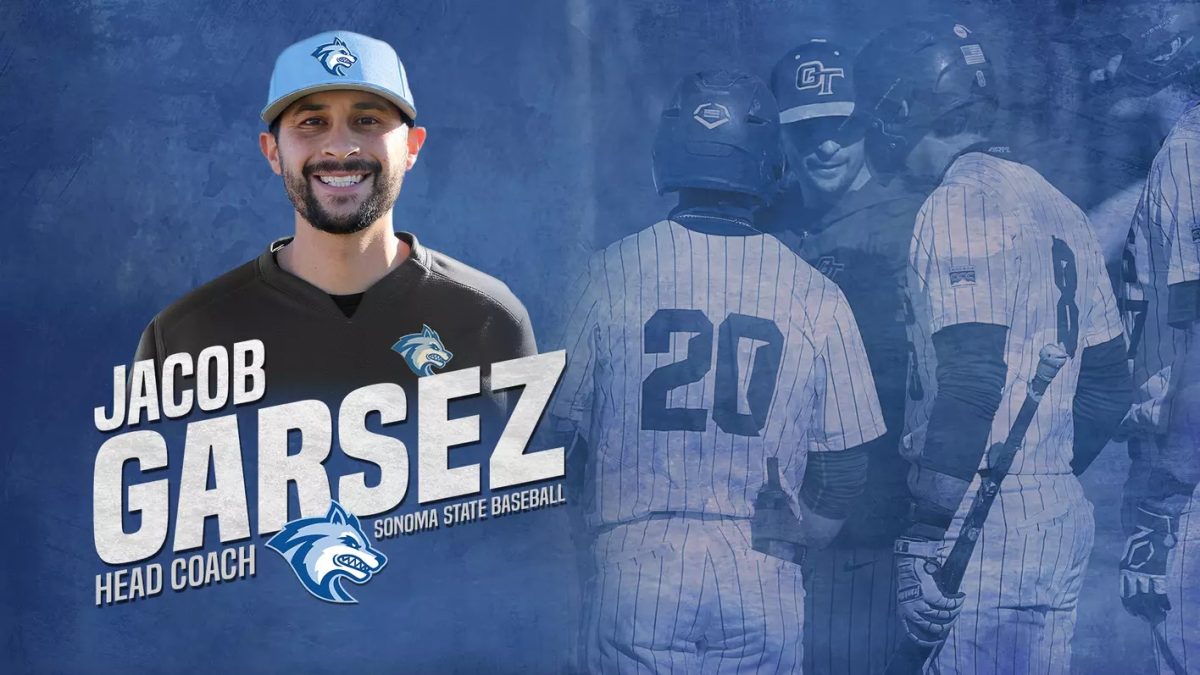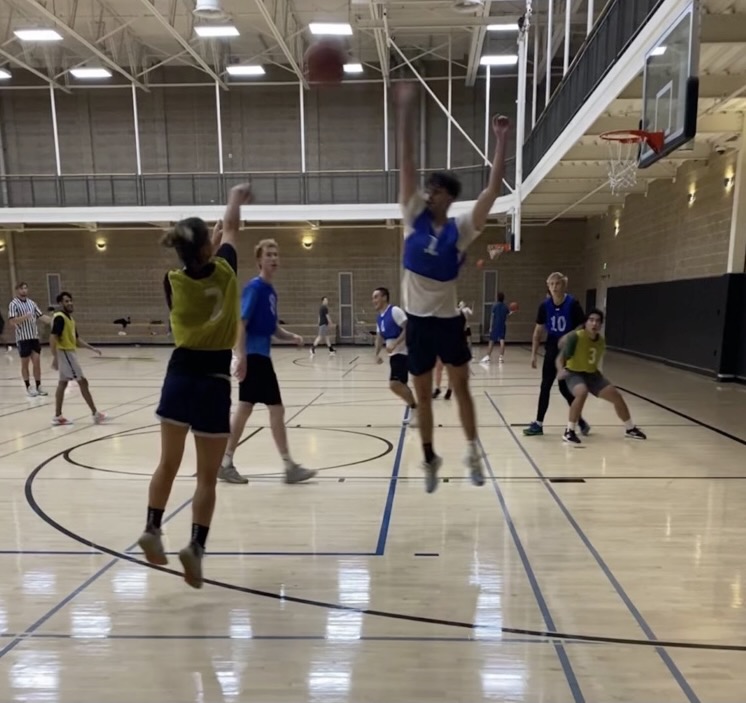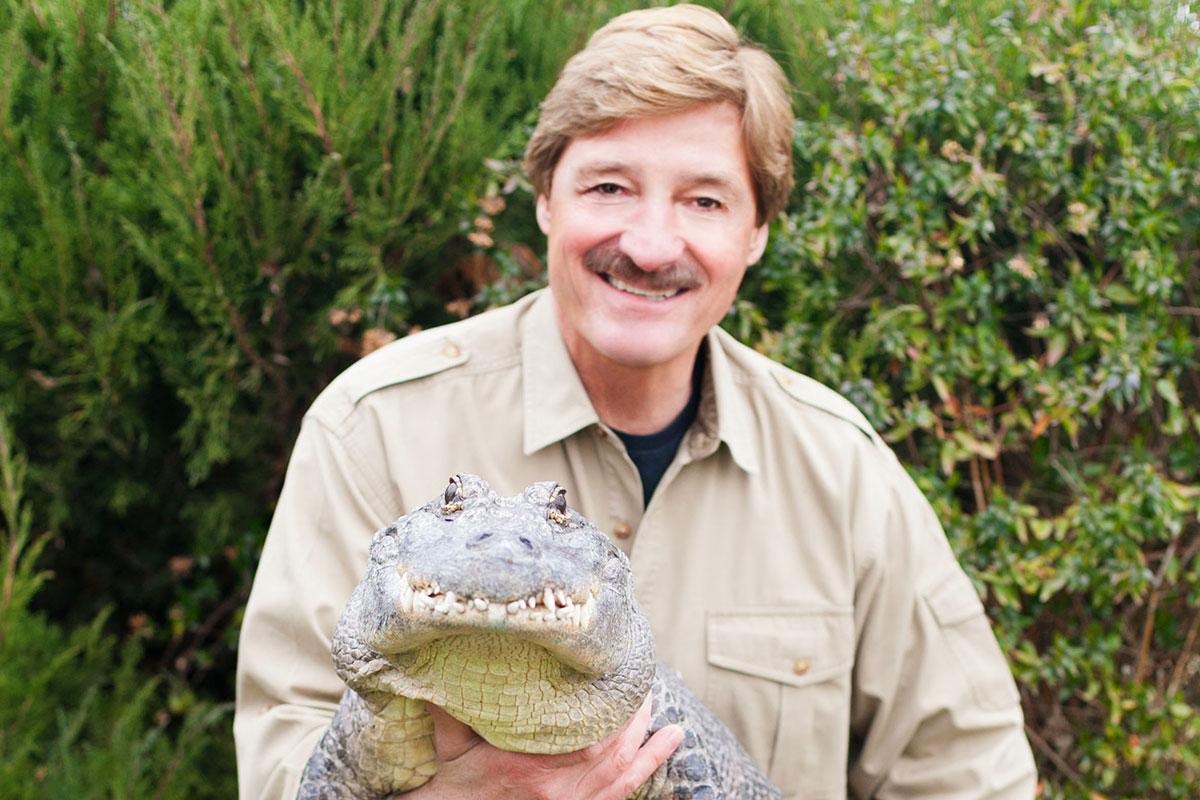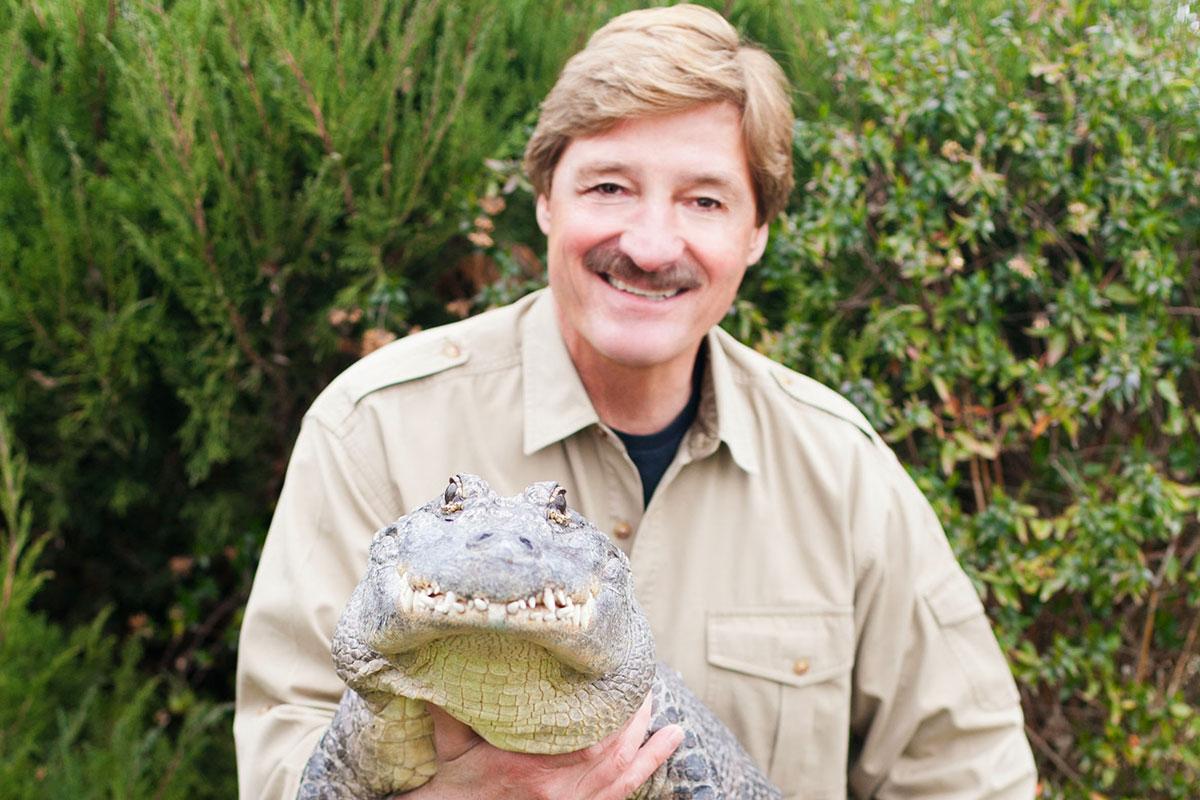Lemurs, eagles and kangaroos, oh my.
Wildlife expert Peter Gros shared a variety of exotic animals to a crowd full of creature lovers at the Wells Fargo Center for the Arts Friday evening.
The show consisted of mainly exotic animals taking the stage and allowing audience members to touch and meet all of them. Gros shared several short clips from his adventures through the years as a wildlife expert, and gave the audience a glance of the joy he received contributing to the planet by exposing the importance of respecting all creatures.
As the current ambassador of Animal Planet’s TV show “Mutual of Omaha’s Wild Kingdom,” Gros was inspired to show everyone up close what he does for a living.
Gros had 30 years of experience with wild animals and has worked closely with different teams, programs and organizations to help wildlife thrive and exist in this ever-changing world.
In addition he developed rehabilitation programs and breed colonies of endangered species. Gros is a licensed U.S. Department of Agriculture wildlife lecturer. He frequently lectured about wildlife preservation and conservation across the nation with the goal to share his devotion and affection for nature. Gros dedicated his life toward encouraging others to take responsibility into their own hands and care about the wildlife that inhibits the world we live in.
Before the show, there were tables set out where kids could make their own wild animal masks to wear in their seats as they witnessed them right before their eyes. Gros told countless facts about each animal he presented on stage with the help of various licensed animal handlers. Some facts included the purpose behind bird’s hollow bones and how many reptiles use their tongue to smell.
All the animals presented were rescued, hand-raised or rehabilitated to the point that their release into the wild was impossible due to their unnatural comfort around humans. There was a table in the middle of the stage with different animals displayed and a large projector screen that allowed all members of the audience to get an up-close view of each species. Before presenting any of the wildlife, Gros was adamant as he said one should not own a wild animal as a pet.
“Never think of an exotic animal as a pet,” said Gros. “The only reason these animals are with humans today is because they are unable to be in the wild on their own, mostly due to humans debilitating them.”
Gros permitted several lucky children to approach the stage and meet certain wildlife that were deemed “pettable.” Wildlife that audience members were able to touch consisted of Madagascar, hissing cockroaches, Asian blood python, South American kinkajou, monitor lizard, great horned owl, Humboldt penguin, big red kangaroo, green iguana and a lengthy python that took over eight different volunteers to hold at once.
The non-pettable wildlife Gros presented were equally as adapted to humans as the one’s the audience were able to meet. However, for safety reasons, they were left to the professional handlers to display. There were lemurs, macaws, a South American porcupine, an African giant crested porcupine, a crocodile, skunks, genet, golden eagle, capuchin monkey, kookaburra, fennec fox, vulture and an ocelot.
The reactions to each animal from the crowd varied greatly as certain members squirmed in their seats while others were in complete awe. Audience members giggled as the shy penguin kept trying to waddle off the stage, screamed when the crocodile opened its mouth as wide as it could. and their hearts turned to mush whenever a furry friend delightedly ate a banana.
Some members laughed while others gagged when the great horned owl wolfed down a whole mouse in less than a second and everyone made tongue-rolling sounds to get the kookaburra to sing a song. Unexpectedly, the vulture flew from behind the stage where it was hidden, which allowed it to do complete circles over the entire crowd several times before landing on a handler’s glove.
Although the majority of the show was animal presenting, Gros did show four brief video clips of his work on the field in the natural world of wildlife. They consisted of his first scuba diving experience with great white sharks, a trip into the rainforest to meet the local amazon Indians, having his pant leg bit by a baby alligator and a video of cheetahs sprinting for their prey. These videos were just a taste of what he does on his show “Mutual of Omaha’s Wild Kingdom” and some of his life’s work as a wildlife expert through different projects.
Gros wrapped up the night by encouraging all the young people in the crowd to make a difference and to never lose hope.
“I want to wrap tonight up with a request,” said Gros. “This new generation is raised in a world where media emphasized on the gloom and doom of our planet’s decline. We must break out of this hopeless mindset. There is a huge amount of animals that have been taken off of the endangered species list, and as long as we raise awareness and bring hope, not all will be lost.”
When all was said and done, audience membered lined up eagerly to meet Gros face-to-face for autographs, personal questions and pet some of the animals not everyone got the chance to meet on stage.
Peter Ostrom, the production supervisor of the Wells Fargo Center for the Arts, said, “The show is only as good as the animal handlers make it. Without great handlers, there cannot be a great show.”

